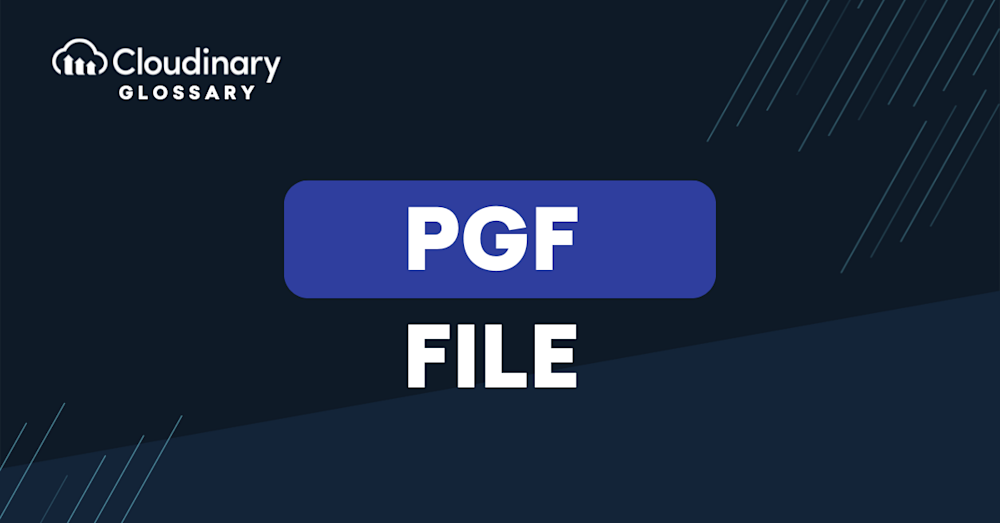What is a PGF File?
A PGF file, short for Progressive Graphics File, is an advanced image file format that combines the advantages of both lossless and lossy compression techniques. Unlike traditional image formats, PGF files incorporate a progressive encoding approach, where image data is incrementally transmitted or loaded, resulting in a smoother, high-quality visual experience for the viewer.
Where Are PGF Files Used?
PGF files serve a unique niche in the digital world, catering to a variety of needs across different platforms. Their versatility and efficiency in storing graphics information make them a preferred choice for several applications, such as:
- Technical Documentation – PGF files are widely used in technical documentation, where high-quality vector graphics are essential. Their ability to scale without losing quality makes them perfect for diagrams, schematics, and other detailed illustrations.
- Academic Papers and Presentations – PGF files are favored in the academic world because they are compatible with the LaTeX document preparation system. This allows researchers to incorporate complex graphics directly into their papers and presentations.
- Web Graphics – For web developers looking for an alternative to traditional formats like JPG or PNG, PGF files offer a compact, scalable option for graphics that need to look sharp at any resolution.
- Printing Industry – The printing sector appreciates PGF files for their precision and scalability, which ensures that printed materials, from business cards to billboards, maintain the highest quality.
How to Open a PGF File?
Opening a PGF file is straightforward. To view or edit PGF files, you need software that can decode and render this format. Applications like Adobe Photoshop and XnView provide support for PGF files, enabling users to easily access and modify their encoded images.
The Pros and Cons of PGF Files
While they offer a robust set of benefits, it’s essential to consider the potential drawbacks to fully understand their applicability and best use cases. So, let’s dive into what makes PGF files both appealing and demanding:
Pros
- Scalability – PGF files maintain high-quality visuals at any size, ideal for presentations, detailed documents, and scalable web graphics.
- Compatibility with LaTeX – For those working with LaTeX documents, PGF files seamlessly integrate, enabling high-quality graphics in academic and technical publications.
- Efficiency – They tend to have smaller file sizes than other vector formats, making them efficient for storage and quick to load.
- High Precision Graphics – PGF allows for the creation of highly detailed and precise graphics, which is paramount in technical and scientific visualizations.
Cons
- Complexity in Editing – Editing PGF files can be more complex than other graphics formats, often requiring specific tools or scripting knowledge in LaTeX.
- Limited Support – Unlike more common formats like JPEG or PNG, PGF files aren’t as widely supported across all software and platforms, potentially limiting their usability in broader contexts.
- Learning Curve – For those new to PGF or LaTeX, there can be a notable learning curve to effectively create or modify these files, requiring time and patience.
Final Thoughts
PGF files represent a significant advancement in image compression technology, offering a progressive encoding approach that balances image quality and file size. Their usage spans across various industries, catering to the diverse needs of visual content compression and transmission.
Stay ahead of the curve, embrace the capabilities of Cloudinary, and redefine how you compress, manage, and deliver visual content in the ever-evolving digital landscape.
Take your digital experience to the next level with Cloudinary’s powerful media optimization tools. Sign up for free today!
In addition, you can try our latest image compressor tools:
- Compress image to 1mb
- Compress image to 2mb
- Compress image to 10kb
- Compress image to 15kb
- Compress image to 20kb
- Compress image to 25kb
- Compress image to 30kb
- Compress image to 40kb
- Compress image to 50kb
- Compress image to 60kb
- Compress image to 70kb
- Compress image to 80kb
- Compress image to 90kb
- Compress image to 100kb
- Compress image to 150kb
- Compress image to 200kb
- Compress image to 250kb
- Compress image to 300kb
- Compress image to 400kb
- Compress image to 500kb





